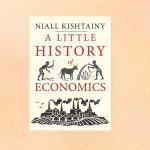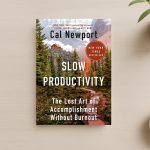Meditations by Marcus Aurelius offers a rare window into the private thoughts of a philosopher‑emperor confronting war, plague, and the burdens of leadership. Written as personal notes for self‑examination, the work distills Stoic wisdom into concise reminders on virtue, duty, acceptance, and the fleeting nature of life. Over twelve books, Marcus urges himself to act justly, master his mind, and align with the rational order of the universe. His reflections are intimate yet universal, offering modern readers a timeless guide to resilience, ethical action, and inner peace amidst uncertainty – proof that even rulers must learn how to rule themselves first.
1. Introduction to Meditations by Marcus Aurelius
Meditations by Marcus Aurelius stands as one of the most enduring works of philosophy in the Western canon, notable not only for its timeless wisdom but also for its deeply personal nature. Written not as a polished treatise but as a series of private reflections “to himself,” the work captures the inner dialogue of a man who was, uniquely, both a Stoic philosopher and the ruler of the Roman Empire at its height.
Composed during the last decade of his life – much of it on campaign during the Marcomannic Wars in the 170s CE – the Meditations reveals how Marcus sought to reconcile political leadership, personal loss, relentless responsibilities, and the inherent suffering of existence with the Stoic ideals of virtue, rationality, and acceptance.
Despite being written without any apparent intent for publication, the work has profoundly influenced thinkers from early Christians to Enlightenment philosophers, contemporary self-help authors, and even modern military and business leaders. Its enduring relevance lies in the universality of Marcus’s concerns: how to live well, maintain integrity under pressure, and approach death without fear.
2. Author Biography
Early Life and Education
Marcus Aurelius was born April 26, 121 CE in Rome into a prominent senatorial family. His father, Marcus Annius Verus, died when he was young, leaving him in the care of his mother, Domitia Lucilla, and other relatives.
Educated in both Latin and Greek – the dual languages of Roman aristocracy – Marcus studied Homer, Virgil, Euripides, Cicero, and Demosthenes. Greek remained the language of philosophy, and Marcus’s fluency reflects his deep engagement with Hellenistic thought.
His formal rhetorical training came under Herodes Atticus (Greek rhetoric) and Marcus Cornelius Fronto (Latin rhetoric), both among the most celebrated intellectuals of their era. Yet over time, Marcus shifted his focus away from rhetoric toward philosophy, an evolution that Fronto lamented.
Imperial Heir and Co-Rule
In 138 CE, Emperor Hadrian adopted Antoninus Pius as his successor, on the condition that Antoninus adopt Marcus and Lucius Verus as heirs. This positioned Marcus as future emperor. Immersed in public life, he served as consul at 19, married Antoninus’s daughter Faustina, and absorbed lessons in governance from his adoptive father.
Reign and Challenges
Marcus became emperor in 161 CE, ruling jointly with Lucius Verus until Verus’s death. His reign confronted formidable challenges:
– The Parthian War (162–166), fought largely by Verus and commanders like Avidius Cassius.
– The Antonine Plague – likely smallpox – brought by returning soldiers, devastating the population.
– The prolonged Marcomannic Wars (from 166 into the 170s), defending the northern frontiers against Germanic and Sarmatian tribes.
– Internal instability, including the 175 CE revolt of Avidius Cassius in the East.
Despite illness and personal tragedy – several of his children died, including heirs – Marcus kept Stoic equanimity at the center of his leadership ethos.
Death and Legacy
Marcus died in 180 CE during renewed campaigns along the Danube, passing the throne to his son Commodus – the first biological son to inherit since the first century. Commodus’s disastrous rule is often cited as the beginning of the empire’s decline.
As a philosopher-king in the spirit of Plato’s ideal, Marcus left not a grand political manifesto but a self-dialogue dedicated to moral resilience and living in harmony with nature’s rational order.
3. Historical and Philosophical Context
Stoicism in the Roman World
Stoicism, founded by Zeno of Citium in the 3rd century BCE, taught that the universe is ordered by the logos – a rational, divine principle – and that human flourishing comes from living in accordance with nature through virtue, reason, and self-control.
By Marcus’s time, Stoicism had evolved from a broad philosophical system into a practical moral discipline, particularly in Rome where it appealed to public servants for its endorsement of civic duty. Roman Stoicism emphasized the “three disciplines”:
- Discipline of Perception: judge reality accurately, without letting emotions distort it.
- Discipline of Action: act justly in service to others.
- Discipline of Will: accept with tranquility what cannot be changed.
Key influences on Marcus included Epictetus, a former slave whose lectures (recorded by Arrian in the Discourses and Encheiridion) promoted a clear separation between what lies within our control and what does not. Marcus also drew inspiration from earlier Stoics like Chrysippus and moral exemplars such as Cato the Younger – paragons of integrity, even in the face of death.
4. The Nature and Structure of the Meditations
The Meditations consists of twelve books (or “rolls” of papyrus), each containing short entries – some aphoristic, others elaborated into brief philosophical essays. The structure is loose and repetitive, reflecting Marcus’s practice-oriented aim.
Book 1: is unique in offering a series of gratitude reflections titled here as “Debts and Lessons,” acknowledging teachers, family, mentors, and even the gods for virtues and examples offered.
Books 2-12: shift to philosophical reminders, meditative exercises, and moral exhortations directed to himself.
Themes recur throughout: impermanence, control versus acceptance, virtue as the only good, the unity of humankind, and the futility of anger, pride, or complaint.
Entries vary in style: imperatives (“Do not waste time arguing what a good man should be. Be one”), analogies (life as actors in a play of assigned roles), historical comparisons, and maxims distilled into epigrams.
5. Main Ideas and Themes
5.1 The Logos and Nature
Marcus consistently affirms that the universe is rationally ordered by the logos. Since all events unfold according to this order, resisting them is futile – and irrational. Acceptance aligns us with nature.
5.2 Control and Indifference
Echoing Epictetus, Marcus divides life into what we can control (our own thoughts, choices, actions) and what we cannot (external events). The key to peace lies in focusing solely on the former.
5.3 Impermanence and Mortality
Life is fleeting; “Alexander the Great and his mule driver both died, and the same thing happened to both.” By meditating on death, one is freed from the fear of loss and can live purposefully in the present.
5.4 The Virtues
For Marcus, four Stoic virtues define the good life:
– Wisdom: understanding the true nature of good and evil.
– Justice: acting for the common benefit.
– Courage: facing pain or adversity without surrender.
– Temperance: self-mastery over pleasure and desire.
5.5 Duty and the Common Good
A recurring refrain is the duty to work for the benefit of others. “We are made for cooperation, like feet, like hands,” he writes, framing service not as sacrifice but as living according to human nature.
5.6 The View from Above
Marcus often urges taking an expansive, cosmic perspective – imagining the earth from high above, seeing human affairs as tiny, transient, and often petty. This “view from above” dissolves ego and relativizes personal troubles.
5.7 Responding to Wrongdoing
When wronged, remember: the offender acts from ignorance of the good. Marcus counsels patience, empathy, and refraining from retaliation that damages one’s own moral integrity.
5.8 Inner Citadel
Borrowing from Stoic imagery, Marcus describes an “inner citadel” – the core of reason within that cannot be harmed unless we surrender it. This is the fortress of self-command.
6. Detailed Overview: Book-by-Book
Book 1: Debts and Lessons
Marcus lists those he owes moral debts to – family for modesty and piety, Rusticus for teaching him moral philosophy, Fronto for eloquence, Antoninus for calm and integrity. It’s a starting exercise in gratitude and self-awareness.
Books 2–3: On the River Gran and In Carnuntum
Written during military campaigns, these entries emphasize mortality, not wasting life in distraction, and focusing on one’s duty. The brevity of life and inevitability of death are central reminders.
Books 4–6
Themes of accepting nature’s will and performing one’s civic role pervade. Marcus exhorts himself to act without complaint, see opponents as kin, and avoid being diverted by praise or criticism.
Books 7–8
Marcus warns against mental agitations: envy, anger, vanity. He reaffirms the Stoic ideal that a good life depends solely on virtue, not fortune.
Books 9–10
Focus on reconciling philosophical ideals with imperial responsibilities. Reminders to resist hypocrisy, avoid resentments, and act with justice even toward those who oppose him.
Books 11–12
Late reflections on mortality, the smallness of fame, and the cycles of nature. The work closes with calls to embrace fate wholly: “The universe is change; our life is what our thoughts make it.”
7. Stylistic and Personal Qualities
The Meditations by Marcus Aurelius is notable for:
– Imperative mode: Marcus addresses himself with urgency.
– Repetition: not a flaw but a deliberate reinforcement method.
– Imagery: nature metaphors (waves, fire, stone) reinforce Stoic cosmology.
– Intimacy: occasional glimpses of fatigue, melancholy, and struggle, revealing the humanity of an emperor wrestling with ideals.
8. Integration with Contemporary Relevance
Modern readers find in Marcus’s Stoicism practical wisdom for:
– Leadership: balancing authority with humility and service.
– Resilience: accepting setbacks as part of the larger order.
– Mindfulness: focusing on the present moment as the only space for action.
– Ethics: grounding decisions in virtue rather than expediency.
Books like Ryan Holiday’s The Obstacle Is the Way and Donald Robertson’s How to Think Like a Roman Emperor draw directly from Marcus’s writings, reframing them for modern challenges.
9. Critiques and Interpretations
While widely admired, some scholars note:
– Lack of systematic philosophy: Marcus repeats Stoic maxims but rarely engages in rigorous argument.
– Self-enclosure: as private notes, they lack dialogue with others’ critiques.
– Tension with imperial role: some argue his acceptance of fate dulled potential reforms against systemic injustice.
However, others see these traits as strengths: Meditations is valuable precisely for its immediacy and consistency in applying Stoic precepts to a life of immense responsibility.
10. Enduring Value
More than 1,800 years after its composition, Meditations remains:
– A manual for self-mastery under pressure.
– A testament to the possibility of living virtuously in positions of power.
– A rare record of the inner life of a ruler, revealing the universality of human struggle against fear, vanity, and self-deception.
Its survival through manuscript transmission and its adoption across cultural boundaries affirm its role as a touchstone for personal philosophy.
11. Conclusion: Meditations by Marcus Aurelius
Meditations by Marcus Aurelius is both a reflection of a man shaped by Stoicism and a living guide for any individual seeking to live with integrity, calm, and purpose in a turbulent world. It offers no illusions about controlling fortune, but insists on complete control over one’s response to it.
In Marcus’s own words, the enduring challenge is: “Waste no more time arguing about what a good man should be. Be one.”
If you found this summary helpful, please share it or leave a comment below.



















